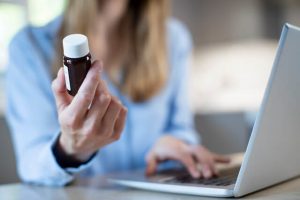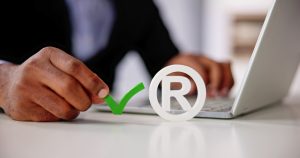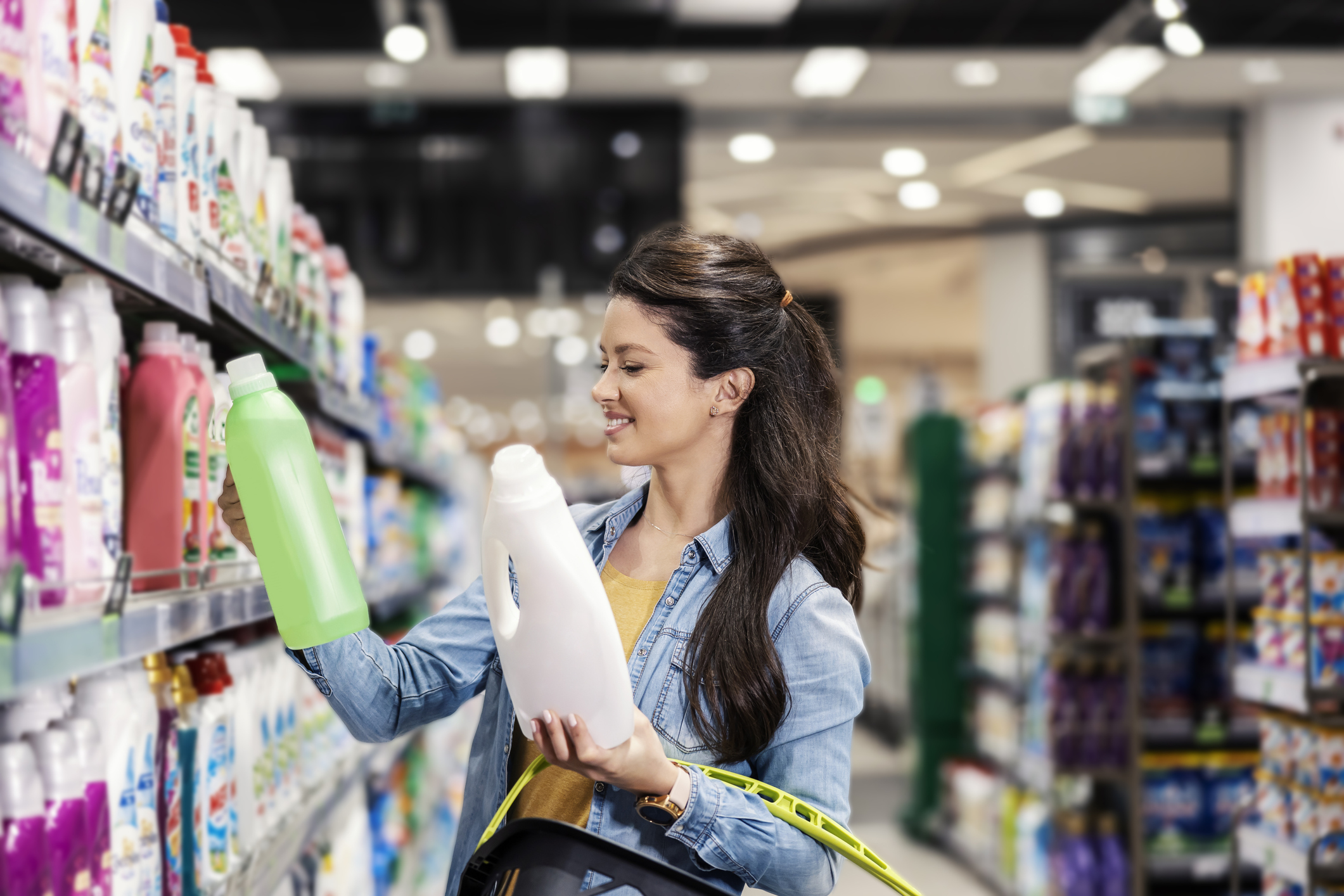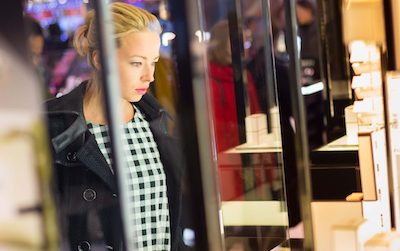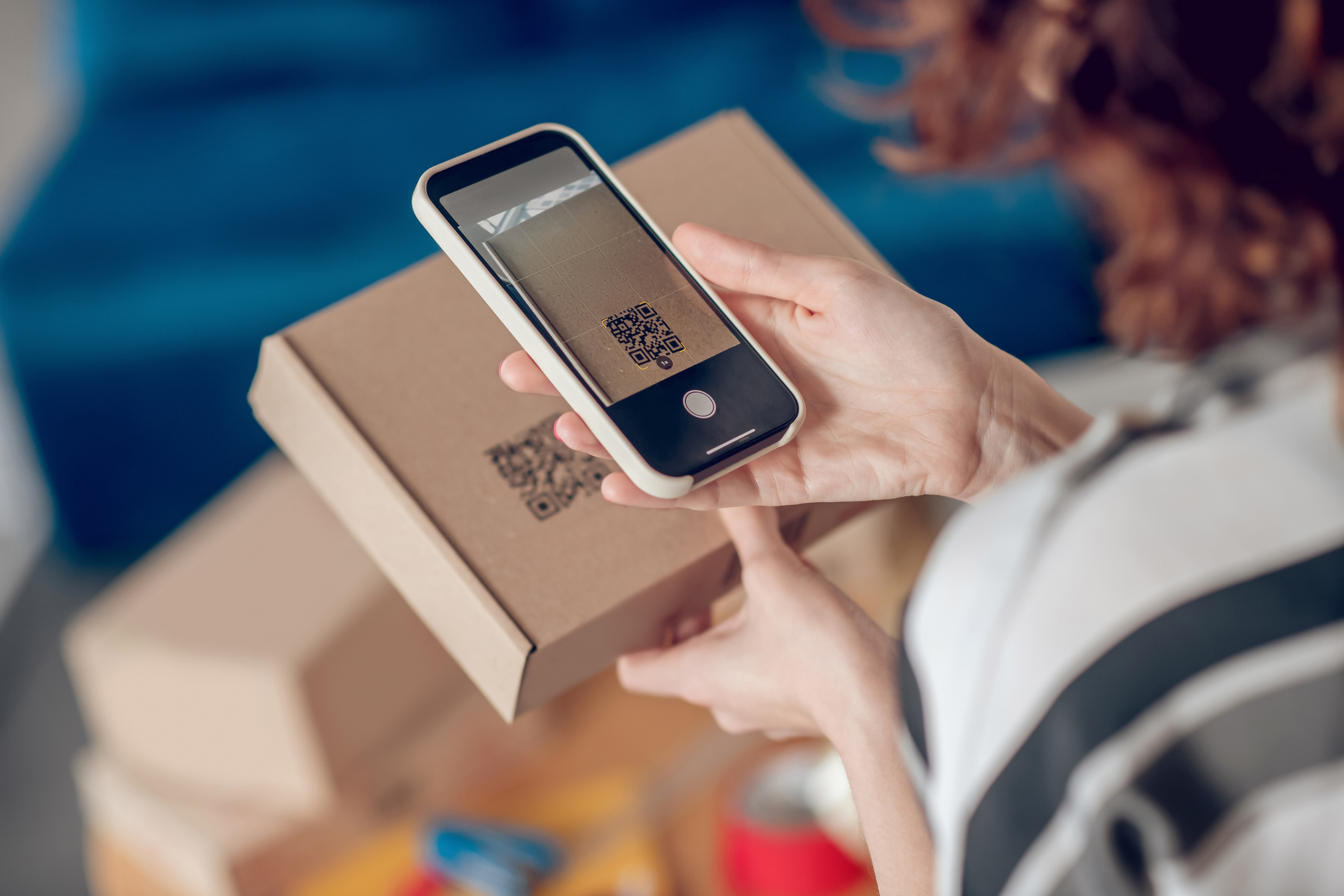By the Authentix Brand Protection team
Back in the 1700’s Ben Franklin was an early innovator of printing techniques that made American paper currency harder to counterfeit. Some of his security features included watermarks, imprints of leaves, and other difficult-to-reproduce features that helped citizens distinguish real bills from illegal copies.

Since then, security feature graphics have of course evolved, but many of these early anti-counterfeit security features have stood the test of time. There are dozens of secure printing, digital authentication, and online protection technologies that can help your brand keep products secure and prevent counterfeiting. Here’s a breakdown of the top security and authentication technologies that might be right for your brand protection needs:
Physical Security Features
Having a multi-layered physical security authentication solution is important to protect your products. If a counterfeiter figures out how to print one security feature like UV, you still have more layered features to verify if the product is indeed yours. There are a wide range of physical security options available, from obvious and overt like holographic images and color shifting inks, to invisible covert and forensic security which are impossible to detect without the proper tools.
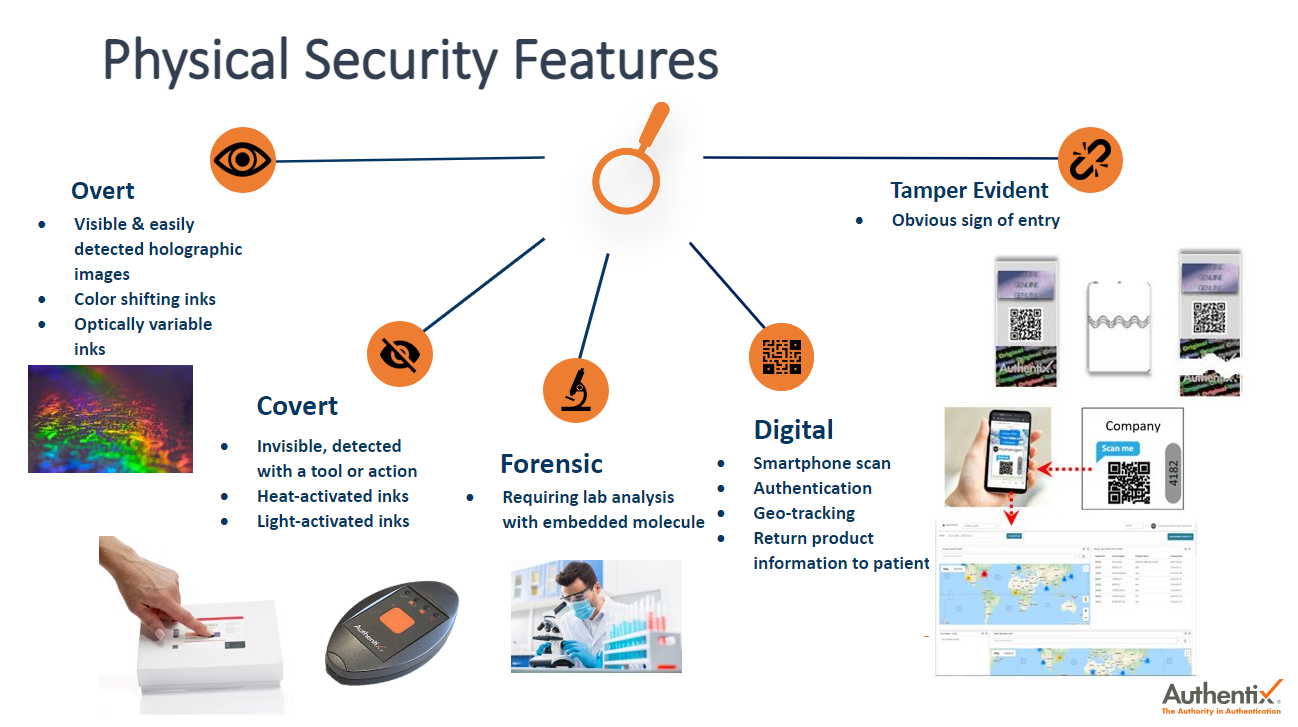
Some popular physical security examples include:
- Tamper evident packaging – labels, stickers, or seals that when opened or tampered with, provide immediate evidence that the product has been compromised.
- Chemical and physical markers – can be hidden from consumers and counterfeiters and can only be seen with specific detectors that are calibrated to a specific wavelength to verify authenticity.
- QR Codes – can now be scanned without the need for an app, using a smartphone camera that directs consumers to a webpage to authenticate the product and then introduces the consumer to another webpage where they can register their warranty, learn more about the product and even suggest other complementing products.
Physical security features will continue to evolve and remain an important part of your brand protection strategy. Future trends in physical security include new nanoprint technologies, printed electronics, and revolutionary inventions in digital printing. It is anticipated that these and many more will become the standard for high security printing.
Digital Authentication
Digital product authentication is a brand protection strategy that works by adding a unique digital identifier to your product. This allows your company to track the lifecycle of products, identify where transactions are taking place, and provides data analytics and insight into your products and customers. Unique QR codes on each product can be scanned by inspectors along the supply chain to ensure authenticity, as well as by end customers at the point of sale. Consumers can instantly authenticate their products and your brand can engage customers by serving relevant offers and information.
For example, a well-known spirits company was facing counterfeits across China, resulting in loss of brand loyalty, consumer trust and revenue. Authentix helped them implement a multi-layered authentication solution using covert and overt features. One of the solutions implemented was a QR code featuring a digital consumer engagement experience as well as authentication verification. The result was 90 million bottles with unique identifiers that could be tracked through the supply chain, allowing the company to detect and shut down over 150 counterfeiting locations including warehouses, retail shops and print shops.
Online Brand Protection
The rise in online sales has been unfortunately accompanied by the rise in counterfeiting on online marketplaces, social media platforms, and websites. When looking for an online brand protection services provider, it is important to ensure their scanning software is proprietary and not provided by a third party. This gives you more control and security and makes it easier to do takedowns on social media where counterfeiters can advertise for a few hours at a time to targeted audiences. You should also ensure that your protection partner has the ability and resources to scan webpages and marketplaces, social media platforms, e-commerce apps, messaging apps like WeChat, payment sites, and the dark web for infringing content and listings.
It is also important for your online brand protection partner to have global marketplace coverage to allow you to do test purchases and verify product authenticity around the world. AI and machine learning capabilities can also give you actionable insights that lead to in-person shut downs and allow local law enforcement to conduct raids.
Following is a good example of one of Authentix’s clients using online brand protection technology to secure their brand:
This case is very similar to most companies that sell their products online. The company was a highstreet fashion brand that had a problem with lookalike and copycat products, posing a threat to their brand reputation and a decrease in sales. After Authentix implemented various image recognition tools that analyze and compare images against known logos and patented designs, test purchases were made and it was detected that the products were indeed infringements. The success rate from online enforcement was 98% and over 300 raids were then conducted, resulting in 8 civil litigation cases.
Evaluating Your Brand Protection Needs
Security should be integrated into your brand protection solution design from day one, not just as an afterthought. Early evaluation helps your brand with packaging design and product launches further down the road. Conducting a brand risk assessment helps determine in which markets your company is having counterfeiting issues and can help you gauge which type of security solution or solutions are the best fit for your situation. Having security technologies that give customers peace of mind the product they are purchasing is authentic, can be a great strategic advantage as your competitors struggle to add security to their products once they suffer the effects of counterfeits. Security should be a priority for long-term success so that your weak points don’t become susceptible to counterfeiters.
Authentix Customized Brand Protection Solutions
Authentix’s team of brand protection experts is ready to help your company every step of the way to protect your products with the latest and greatest security technology capabilities. Here are just some of the things you can expect when you work with our brand protection specialists:
- Assessment and advisory services
- Defining the gaps between your current practices and industry leading practices
- Specific recommendations for improvement
- Assistance with process implementation
- Forensic product analysis services
- Risk and vulnerability assessment
- Simulated detection by third parties
- Identification of possible materials used for security feature replication
- Prototype development services
- Product and packaging prototypes that incorporate security features designed specifically for you
- Implementation services
- Help managing the deployment of Anti-Counterfeiting Program technology in your facility
Contact Authentix today to learn more about how our brand protection strategies can help maintain your brand’s integrity in the global marketplace.
About Authentix
As the authority in authentication solutions, Authentix brings enhanced visibility and traceability to today’s complex global supply chains. For over 25 years, Authentix has provided clients with physical and software-enabled solutions to detect, mitigate, and prevent counterfeiting and other illicit trading activity for currency, excise taxable goods, and branded consumer products. Through a proven partnership model and sector expertise, clients experience custom solution design, rapid implementation, consumer engagement, and complete program management to ensure product safety, revenue protection, and consumer trust for the best known global brands on the market. Headquartered in Addison, Texas USA, Authentix, Inc. has offices in North America, Europe, Middle East, Asia, and Africa serving clients worldwide.

